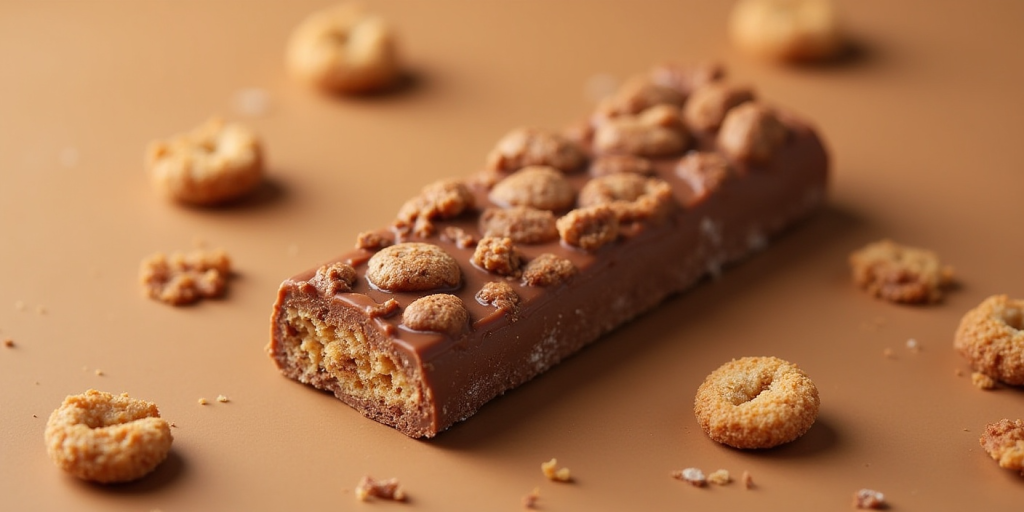Protein bars have become a staple in the functional food market, offering convenient nutrition across various sectors, including sports nutrition and meal replacements. It is no surprise that retail sales of snack, nutrition, and performance bars led to $8.9 billion in 2023 [1].
However, their protein and lipid content make them vulnerable to oxidation, leading to texture deterioration, rancidity, and reduced protein bars’ shelf life. This article explores the mechanisms behind oxidation in protein bars, the role of lipid degradation, and how natural antioxidants can be effectively used to preserve product integrity and consumer satisfaction.
Why do protein bars oxidize? Lipid and protein degradation mechanisms
The protein bar shelf life is often compromised by oxidative reactions that target both lipids and proteins. However, it is lipid oxidation that poses the greatest threat to the sensory and structural quality of the final product. During storage, lipids in protein bars undergo primary and secondary oxidation. The initial phase produces hydroperoxides, which rapidly degrade into aldehydes, ketones, and alcohols, compounds responsible for rancid flavors and odors.
Secondary oxidation products, particularly aldehydes, not only deteriorate flavor but can also react with proteins, promoting further degradation. This cascade of reactions can lead to protein aggregation in protein bars, loss of functional properties, and textural hardening. Although protein oxidation itself contributes to structural changes, it is often triggered or exacerbated by lipid-derived radicals, making lipid protection a central strategy for preserving product quality.
Recent studies highlight that bars formulated with plant proteins, such as pea and dairy proteins like whey, are especially susceptible to oxidation-induced hardening. In contrast, rice protein, due to its intrinsic insolubility and low reactivity, undergoes minimal oxidation and hardens more slowly [1]. These findings suggest that the lipid-protein matrix in protein bars must be carefully managed to mitigate oxidative deterioration.
Best practices to extend protein bar shelf life: storage and packaging insights
Proper storage and packaging conditions are essential to reduce oxidation rates in protein bars. Moisture migration and exposure to oxygen are two critical factors that accelerate lipid degradation. As bars lose water during storage, the absence of moisture as a plasticizer promotes phase separation and facilitates oxygen diffusion, thereby increasing susceptibility to oxidation.
Temperature is another key variable. Bars stored at elevated temperatures (e.g., 37°C) have been shown to experience faster rates of lipid peroxidation, leading to higher concentrations of thiobarbituric acid-reactive substances (TBARS), which serve as markers of secondary oxidation [1]. Therefore, temperature-controlled environments are essential for maintaining stability.
Packaging that provides oxygen and moisture barriers is also fundamental. Modified atmosphere packaging (MAP) with reduced oxygen levels can further delay the onset of lipid oxidation. Combining these physical strategies with the use of antioxidants offers a more comprehensive approach to oxidative control.
Preventing rancidity and hardening: antioxidant strategies in protein bar formulation
Among the most effective approaches to preventing lipid oxidation in protein bars is the inclusion of antioxidants in the formulation. Natural antioxidants, particularly tocopherols (vitamin E), are well-documented for their ability to neutralize free radicals and delay the formation of oxidative by-products.
When included in the lipid phase of protein bars, natural antioxidants such as D-Alpha-Tocopherol scavenge reactive oxygen species and stabilize fatty acids. This not only reduces the formation of off-flavors but may also minimize the secondary reactions between lipid oxidation products and protein molecules. The result is improved textural stability, delayed hardening, and extended shelf life. Unlike synthetic antioxidants, which may raise regulatory and consumer concerns, natural antioxidants derived from plant oils are perceived as cleaner and more sustainable options.
Btsa, Europe’s leading producer of natural antioxidants and natural vitamin E, offers tailored antioxidant solutions designed to enhance the oxidative stability of lipid-rich foods, including protein bars. Tocobiol® is a natural antioxidant made from tocopherols from non-GMO vegetable oil. It is ideal for protecting food and increasing its shelf life, preserving the freshness and sensory quality of the product, without altering the final product color or smell.
Managing oxidation in protein bars is a multidimensional challenge that requires careful formulation, storage design, and ingredient selection. As protein-rich products continue to grow in demand, maintaining their sensory and structural integrity becomes essential for market competitiveness. Preventing lipid oxidation in protein bars is central to this goal, as it directly impacts texture, flavor, and shelf stability. Btsa aims to help manufacturers significantly reduce oxidative degradation, delay hardening, and extend product life thanks to its innovative natural antioxidants.
Sources
[1] Dietrich RB, Lincoln L, Momen S, Minkoff BB, Sussman MR, Girard AL. Role of protein and lipid oxidation in hardening of high-protein bars during storage. J Food Sci. 2025 Jan;90(1):e17657. doi: 10.1111/1750-3841.17663.

